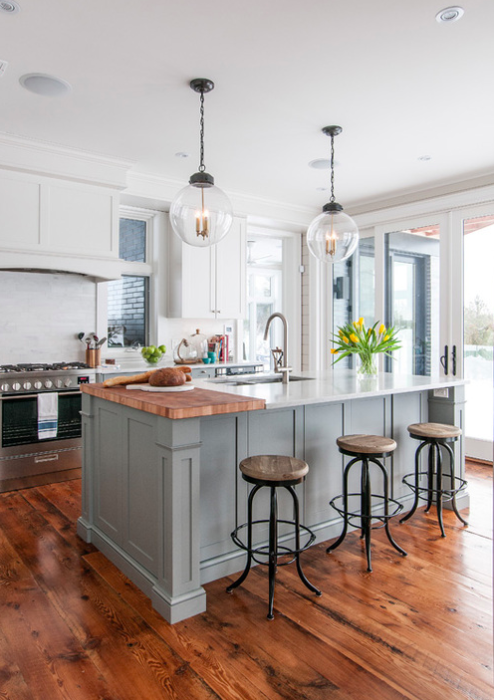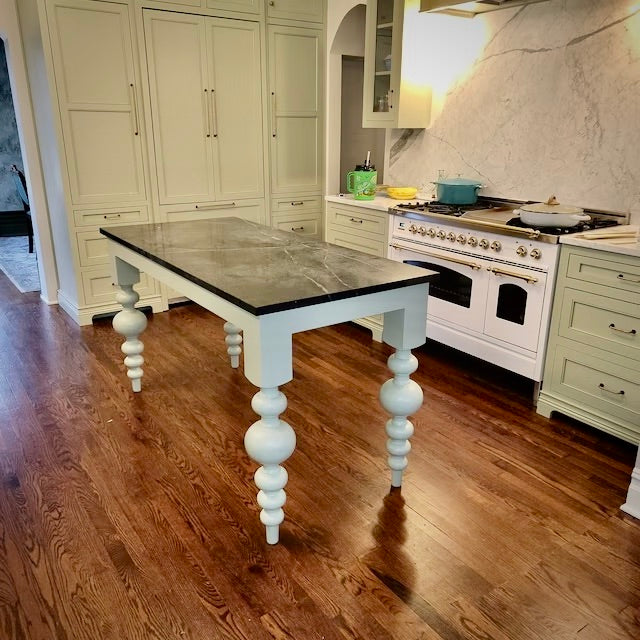The Significance of a Sturdy Kitchen Area Island Leg in Creating a Functional Food Preparation Location
A durable kitchen area island leg works as an essential part in establishing a functional cooking atmosphere, giving required assistance for both the kitchen counter and numerous kitchen activities. The stability it provides can significantly decrease the danger of mishaps in high-traffic locations, while additionally adding to the total aesthetic coherence of the space. As kitchens develop right into multifunctional locations for food preparation, dining, and interacting socially, the selection of materials and layout considerations for island legs ends up being increasingly important. Recognizing these elements can transform your cooking area into a much safer and a lot more reliable location, prompting additional expedition right into the ideal options readily available.
Benefits of Sturdy Island Legs
Giving important support, tough kitchen area island legs play a pivotal function in improving the functionality and resilience of kitchen area islands - kitchen island leg. These legs not only birth the weight of the kitchen counter and any type of extra products put on the island, however additionally add to the general security of the framework. A well-supported cooking area island makes certain that it remains functional and upright, also under heavy usage, which is particularly vital in hectic kitchen atmospheres
Moreover, strong island legs can enhance the visual appeal of the cooking area. They provide a strong framework that can enhance various design styles, from contemporary to typical. This adaptability allows home owners to personalize their cooking area islands according to personal taste while making certain that the structural stability remains uncompromised.
Along with their encouraging duty, robust cooking area island legs can also boost security. A steady island decreases the risk of accidents triggered by tipping or wobbling, which is specifically important in households with kids or senior people. Strong legs can help with a seamless circulation of activities, permitting for effective dish preparation and social interactions within the kitchen area room. Eventually, buying durable cooking area island legs is important for a functional and aesthetically pleasing cooking location.
Materials for Kitchen Area Island Legs
When selecting products for cooking area island legs, sturdiness and aesthetic allure are critical factors to consider,. The most common products include wood, metal, and engineered wood, each offering one-of-a-kind benefits.
Wood, such as oak, cherry, or maple, is a traditional selection because of its stamina and classic elegance (kitchen island leg). It can hold up against significant weight and is resistant to use, making it suitable for high-use kitchen area atmospheres. Furthermore, wood can be tarnished or repainted to complement different kitchen designs
Metal legs, typically crafted from stainless steel or wrought iron, provide a industrial and modern-day look. They are unbelievably strong and can sustain significant loads while being resistant to wetness and heat, which is beneficial in a cooking location. Steel legs can also be conveniently cleansed, improving their practicality.

Style Factors To Consider for Stability
The option of products for cooking area island legs directly influences the style considerations for stability. When developing a kitchen island, it is vital to assess the weight-bearing ability of the picked materials. Larger materials, such as solid timber or steel, usually supply better security, specifically under the anxiety of day-to-day usage.
In addition, the leg style have to include proper geometry to improve security. A larger base raises the assistance location, decreasing the risk of wobbling or tipping. Factor to consider needs to also be offered to the elevation of the legs; out of proportion leg lengths can bring about inequality, endangering the total security of the island.
In addition, the distribution of weight throughout the island is vital. Guaranteeing that the leg placement aligns with the heaviest parts, such as kitchen counters and home appliances, will certainly better improve stability.
Maintenance Tips for Longevity

Depending on the material of the legs-- whether timber, steel, or composite-- appropriate cleansing methods ought to be used. Metal legs might need a light gloss to prevent corrosion and preserve their appeal.
In addition, tightening screws and screws on a regular basis can guarantee security and stop wobbling. If the kitchen area island experiences heavy usage, take into consideration enhancing the legs with added brackets or supports to boost longevity. Finally, using a protective surface or sealant can secure versus wetness and stains, extending the life expectancy of the legs. By adhering to these upkeep ideas, house owners can guarantee their kitchen area island legs continue to be durable and useful for years ahead.
Choosing the Right Leg Design
Normal maintenance makes certain that kitchen area island legs continue to be functional and sturdy, but selecting the ideal leg design is similarly vital for both visual appeals and support. The option of leg design can dramatically affect the overall design and consistency of your kitchen.

Performance is an additional vital facet. As an example, thicker legs or those with a strong base can sustain larger kitchen counters and tools, improving the island's utility. Alternatively, slim legs may produce a ventilated look, appropriate for lighter designs yet potentially less encouraging.
Verdict
In summary, the significance of sturdy cooking area island legs can not be overemphasized Website in the production of a practical food preparation area. These legs supply vital assistance, boost stability, and contribute to the general aesthetic of the cooking area. By thoroughly selecting proper materials and styles, in addition to applying correct upkeep techniques, the durability and efficiency of kitchen area islands can be made sure. Ultimately, purchasing durable island legs is essential to accomplishing a reliable and safe cooking setting.
A strong cooking area island leg serves as a fundamental part in developing a practical cooking environment, giving essential assistance for both the counter top and different kitchen area activities.Providing vital support, durable kitchen area island legs play a critical function in enhancing the capability and resilience of kitchen area islands. Eventually, spending in tough kitchen island legs is important for a practical and click here for more aesthetically pleasing cooking area.
Consideration needs to also be provided to the elevation of the legs; disproportionate leg lengths can lead to inequality, jeopardizing the overall stability of the island.
Wood legs give heat and a traditional appearance, while steel legs supply a modern-day and commercial feeling.